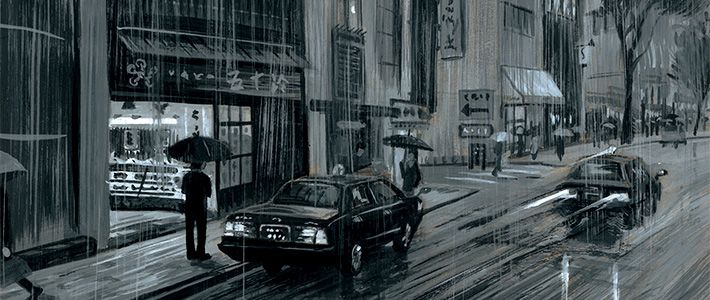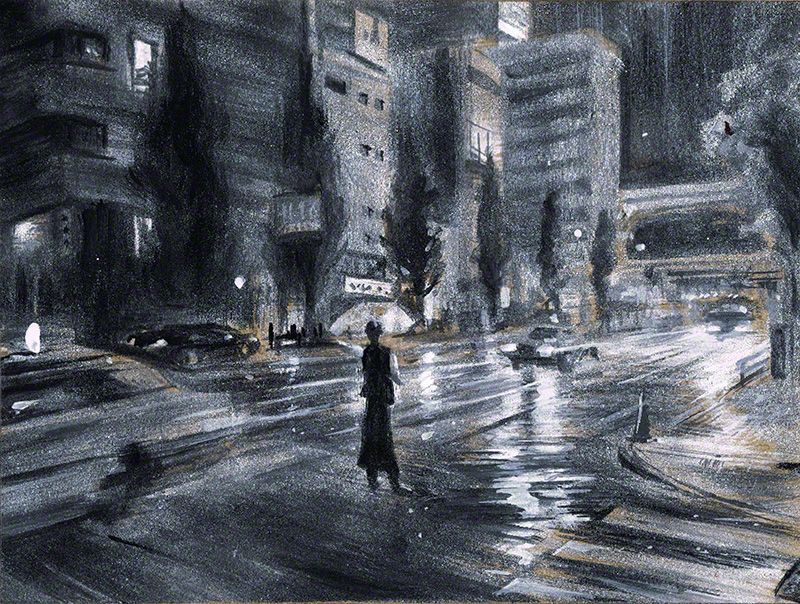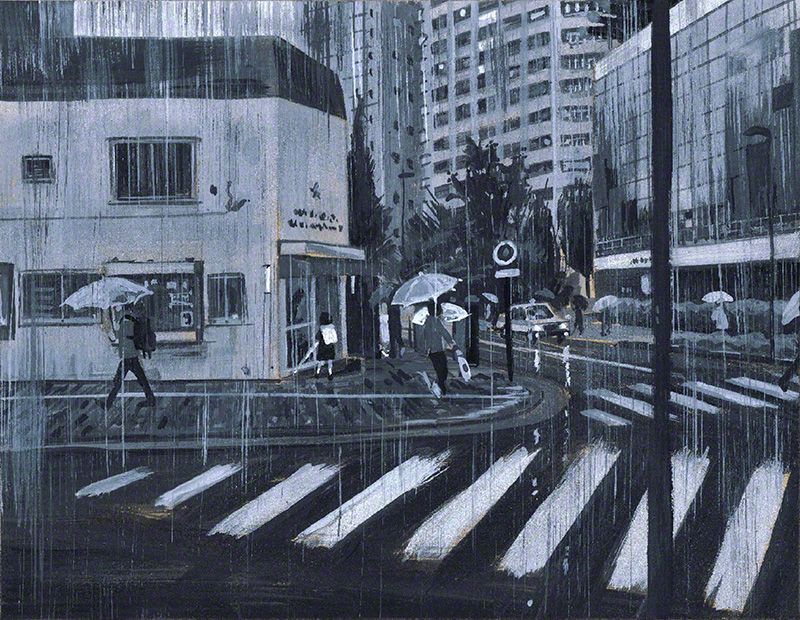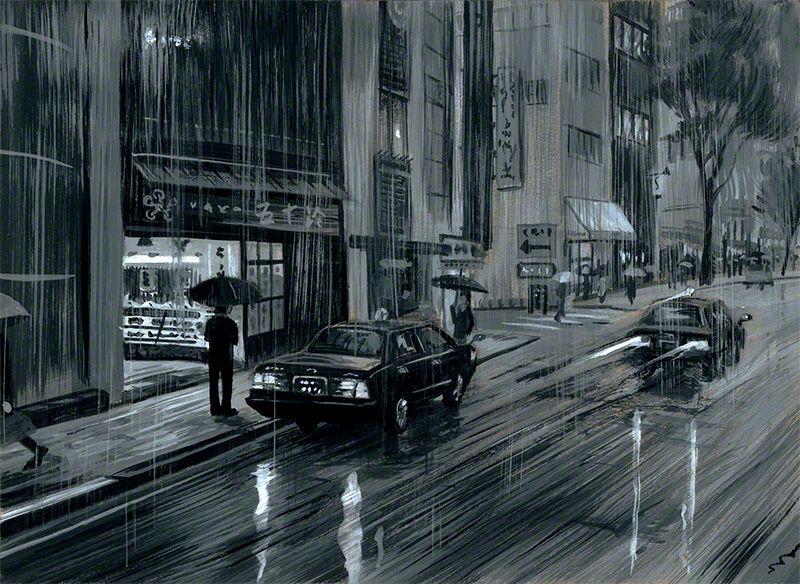
Alone in the Rain: Three Tokyo Scenes
Culture- English
- 日本語
- 简体字
- 繁體字
- Français
- Español
- العربية
- Русский
An artist in Tokyo can set down an easel and capture a scene just about anywhere. Travel around the city and you’ll see scene after scene that looks like a painting. This article features three gouache paintings of Tokyo, each of which depicts a rainy scene and focuses on a single person.
Waiter in Nishi-Azabu
As the sun goes down each day in Tokyo, people dressed in pristine white come out into the streets. These chefs and wait staff of the capital’s eateries can be seen running last-minute errands to buy fresh ingredients and seeing off guests who have just dined. Their etiquette is as faultless as their uniforms, and they know how to make their customers feel aristocratic. It’s not uncommon for a staff member or two to exit the restaurant and wait outside until the customers have walked way into the distance or are safely in a taxi. Customers are looked after right up until the point they transition back into being regular members of the public.
Nishi Azabu, depicted in the first painting, is one such place in Tokyo. The waiter in the painting was trying to hail a cab on Gaien Nishi-dōri, the wide, serpentine road that runs north-south through this part of the city. It often reminds me of the Monaco Grand Prix because of its growling supercars, glamorous ambience, and relative lack of traffic. It’s a sight to savor, especially from twilight onward. It was so wet out there that night that it looked like the waiter was trying to catch a fish.
Schoolgirl in Iidabashi
Children traveling to and from primary school on journeys that can take more than an hour are a common sight in Japan. Even in the most congested parts of Tokyo, such as Shinjuku, you’ll see children with their backpacks confidently negotiating their way through the spaghetti-like network of train and bus lines. It’s a striking sight for many people from overseas. I can’t recall seeing a child of, say, five to seven years old walking around London alone.
Tokyo is kind to its young people. Designated places at which children can stop by if they feel lost or in danger are numerous, station names are written in hiragana (which is easier to read for children than kanji), and their bright backpacks and hats make them conspicuous, so people will notice if a schoolchild is perturbed.
The girl in the second painting had stopped by a police box in Iidabashi. She closed her umbrella and ducked into the police box to chat with the policeman stationed there, perhaps to ask the way. I imagine that she may not have had a smartphone and so couldn’t check her way to wherever she was heading—perhaps an after-school class.
Taxi Driver in Kagurazaka
If you visit a Japanese confectionery (wagashi) store, you will probably feel rewarded even before you’ve consumed anything, such is the visual beauty of the treats on offer. Wagashi are typically hand-crafted and delicately colored, and reference a season. And rather than being gobbled down, as sweet things often are, they’re admired and then savored in a few small bites. I love the way that Japanese confections slow the world down.
Giving wagashi to acquaintances, colleagues, and family members is a custom that many Japanese like to indulge in. This act of giving sweetens the relationship. And the act of buying is enjoyable thanks to the numerous wagashi on offer.
In the third painting, the rain falls hard on a stationary taxi and its driver, who is standing alongside it. The customer, an elderly man, is in a wagashi store on the main road running through Kagurazaka. He’s been in the store for a good 10 minutes, perhaps mulling over which treat to buy for an old friend or a family member. I saw this scene in the rainy season, so perhaps he was buying a treat based on a flower often associated with this season, the Japanese hydrangea.
(Originally written in English. Paintings by Stuart Ayre.)

